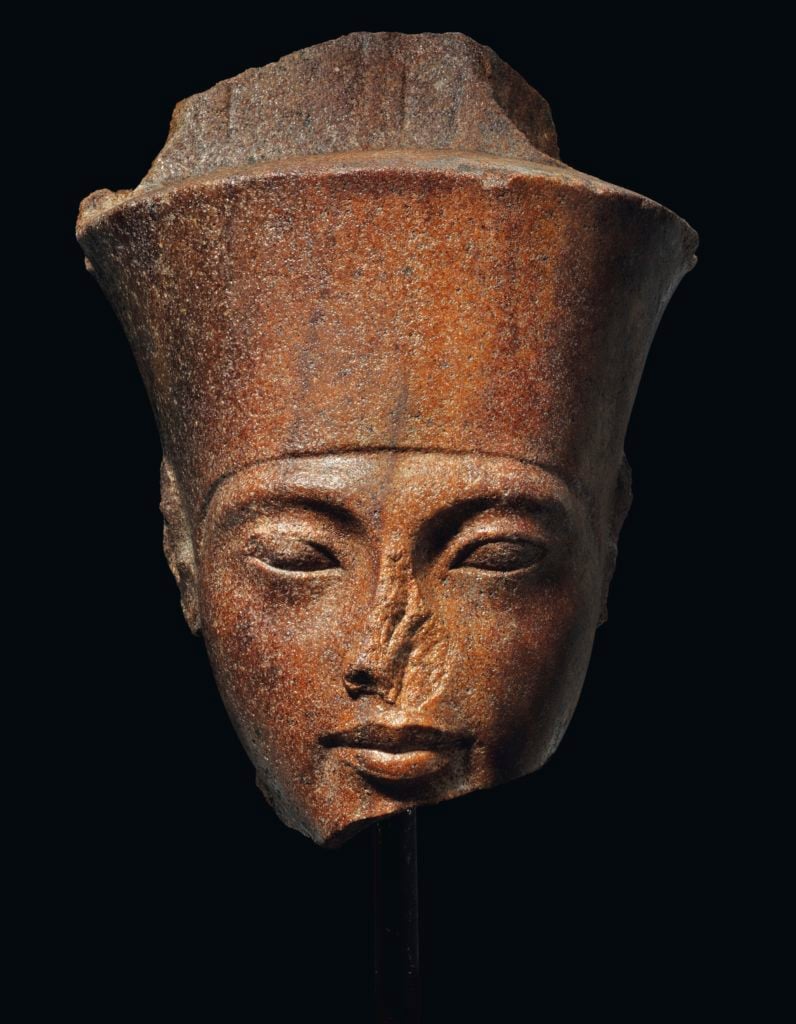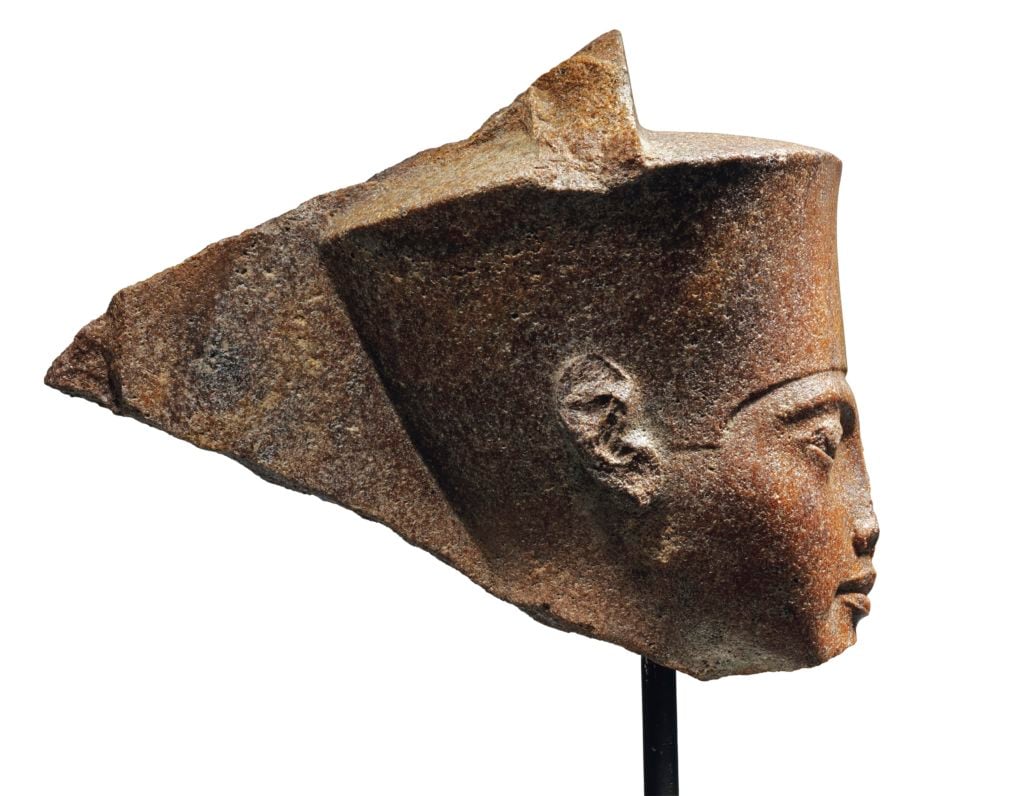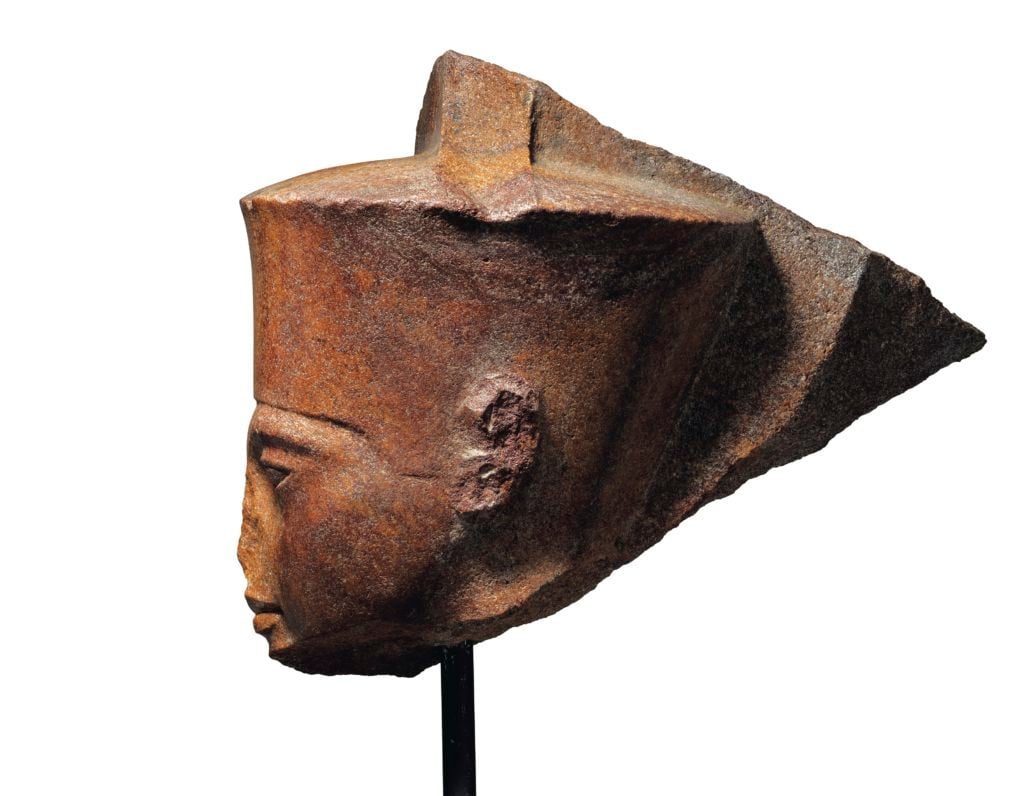https://news.artnet.com/market/christies-looted-tutankhamen-sculpture-1569736
Egypt Tries to Halt the Auction of a King Tut Sculpture Amid Accusations That It Could Have Been Looted
Egypt's most high-profile archaeologist wants the $5 million sculpture of the boy king to be repatriated.

The Egyptian embassy in London is in a race against time to try to stop the planned sale of a sculpture of Tutankhamen at Christie's after the country's most high-profile archaeologist claimed it was probably looted from the Karnak Temple. Egypt is reported to have requested the return of the 3,000-year-old sculpture estimated to be worth $5 million, which is due to be auctioned in three weeks' time.
Egyptian representatives in London have written to the UK government, UNESCO, and the auction house in a bid to stop the sale, according to AFP. The move comes after the archaeologist and Egypt's former minister of antiquities, Zahi Hawass, said that the 3,000-year-old sculpture was likely looted from the famous temple in Luxor. Hawass said: "I don't think Christie's have the papers to show it left Egypt legally; it's impossible." The archaeologist believes that Egypt has an "ethical right" to recover the head regardless of legal title.
Egypt has stepped up its efforts to retrieve artifacts that it believes were smuggled out of the country either recently or over the past few decades. The foreign ministry has also reportedly asked that all Egyptian items in Christie's auctions on July 3 and July 4 be removed from sale pending proof of "valid ownership certificates."
"I agree with Dr Zahi Hawass that the bust should be repatriated since it was looted," Ola El Aguizy, a professor at Cairo University's faculty of archaeology tells artnet News. "I also think that Christie's or any auction [house] should not allow the sale of any ancient Egyptian artifacts because it encourages illegal ownership of objects."
The auction house has robustly defended the sale, and its due diligence. A Christie's representative told artnet News: "It is hugely important to establish recent ownership and legal right to sell, which we have clearly done. We would not offer for sale any object where there was concern over ownership or export."

The Egyptian brown quartzite head of the God Amen with features of the Pharaoh Tutankhamen. (around 1333-1323 B.C.) Photo courtesy Christie's.
The sculpture is expected to reach more than £4 million ($5 million) when it hits the block as part of the auction house's "The Exceptional Sale" on July 4. The brown quartzite head, which shares the features of the famous boy pharaoh, is around 11 inches tall. A distinctive crown demarcates it as an icon of the Egyptian sun god Amen. It is going on sale as part of the Resandro Collection, a prominent private German collection of Egyptian art. The auction house brought in more than £3 million (around $4 million) when it sold part of the collection in 2016.
The Christie's press release for the object states that the head was acquired from a Munich-based dealer, Heinz Herzer, in 1985. Previously it was in the collection of an Austrian dealer, Joseph Messina, who bought it from Prinz Wilhelm von Thurn und Taxis in around 1973-74. The release states that von Thurn und Taxis "reputedly had it in his collection by the 1960s."
Since the 1970 UNESCO convention against the illicit trade in antiquities, museums do not ordinarily acquire artifacts that cannot be shown to have been exported before that date. Egyptian law stipulates that any antiquities uncovered on Egyptian soil after 1983 are the legal property of the state, as is anything discovered before then unless legitimate legal title predating the 1983 law can be proven.

The Egyptian brown quartzite head of the God Amen with features of the Pharaoh Tutankhamen. (around 1333-1323 B.C.) Photo courtesy Christie's.
"There is a long-standing and legitimate market for works of art of the ancient world, in which Christie's has participated for generations," the auction house's representative says, adding: "Christie's strictly adheres to bilateral treaties and international laws with respect to cultural property and patrimony."
artnet News has reached out to the Egyptian ministries of culture and antiquities, as well as the Egyptian embassy in London for further comment, but has not heard back by press time.
-- Sent from my Linux system.
No comments:
Post a Comment